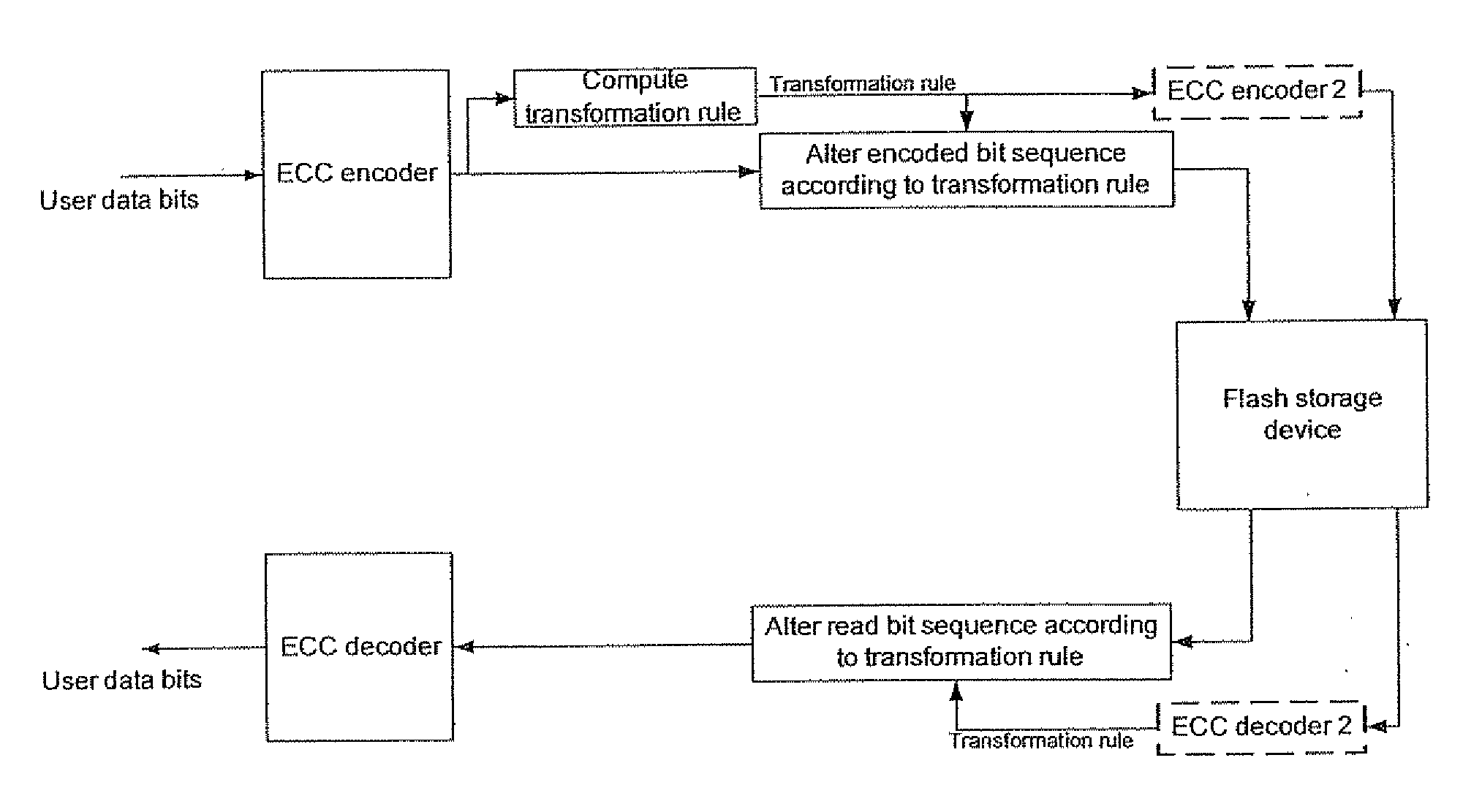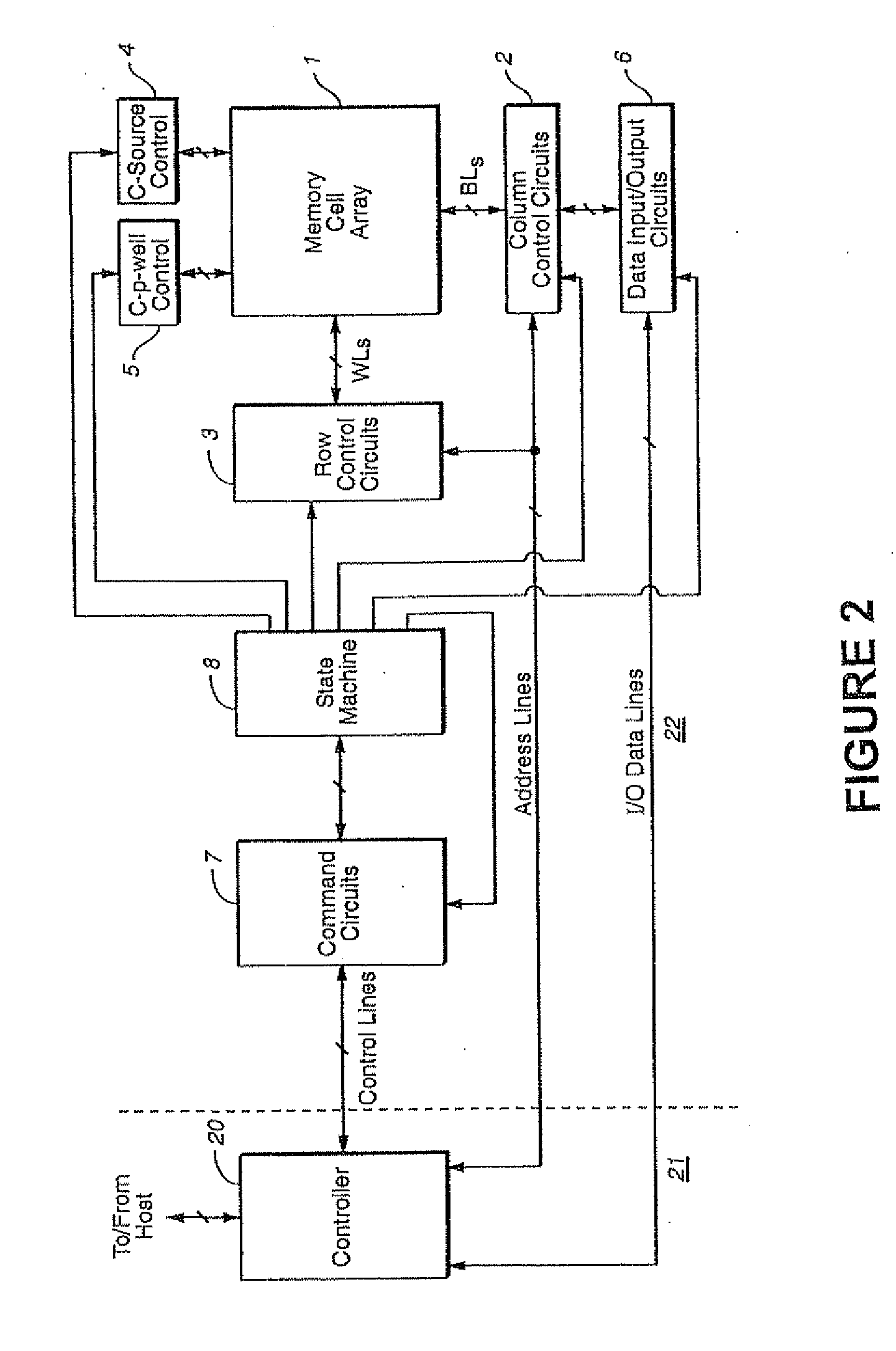Avoiding errors in a flash memory by using substitution transformations
a technology of substitution transformation and flash memory, applied in the field of flash memory, can solve the problems of reducing the effect of various undesirable phenomena, reducing the reliability reducing the error rate of flash memory devices, so as to reduce the effect, reduce the error rate, and reduce the reliability
- Summary
- Abstract
- Description
- Claims
- Application Information
AI Technical Summary
Benefits of technology
Problems solved by technology
Method used
Image
Examples
Embodiment Construction
[0062]The principles and operation of a flash memory according to the present invention may be better understood with reference to the drawings and the accompanying description.
[0063]The present invention reduces the effect of error sources such as PD that depend on the user data stored in a multi bit per cell flash memory device by manipulating the user data and controlling the actual sequence of states that is programmed into the flash memory.
[0064]According to the present invention, a desired distribution states, that is optimal in the sense of minimizing the expected number of cell errors, is induced over the flash memory cells. For example, in some embodiments of the present invention the expected number of cell errors is minimized by minimizing the number of cells that are programmed to the erase state and / or to high states. This is done in the following way: The distribution of the states that should be programmed into the flash memory is examined as a function of the bit seq...
PUM
 Login to View More
Login to View More Abstract
Description
Claims
Application Information
 Login to View More
Login to View More - R&D
- Intellectual Property
- Life Sciences
- Materials
- Tech Scout
- Unparalleled Data Quality
- Higher Quality Content
- 60% Fewer Hallucinations
Browse by: Latest US Patents, China's latest patents, Technical Efficacy Thesaurus, Application Domain, Technology Topic, Popular Technical Reports.
© 2025 PatSnap. All rights reserved.Legal|Privacy policy|Modern Slavery Act Transparency Statement|Sitemap|About US| Contact US: help@patsnap.com



